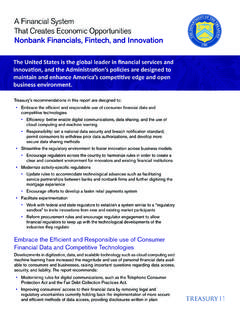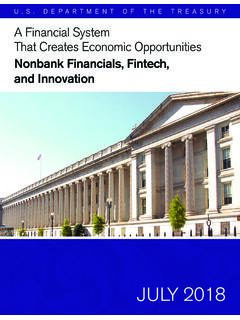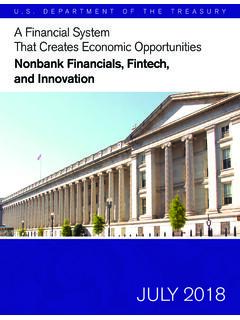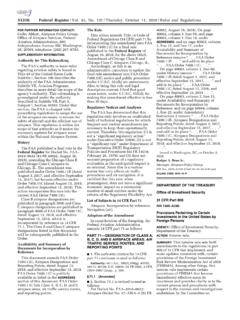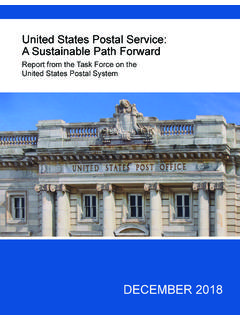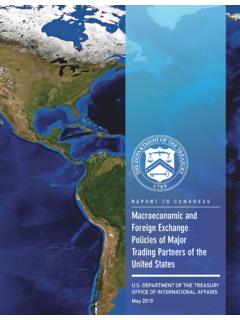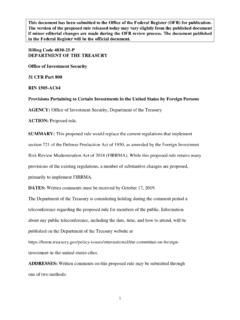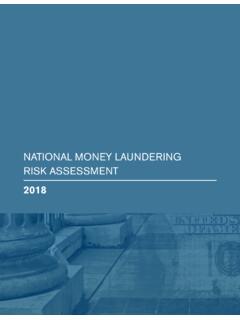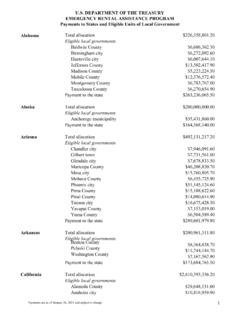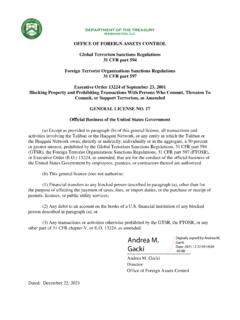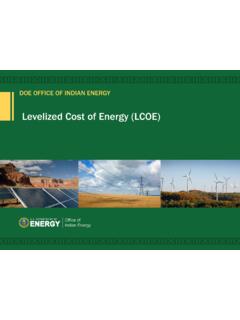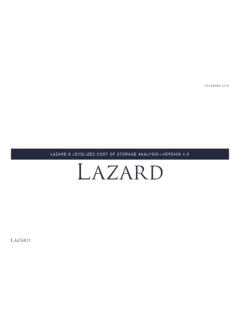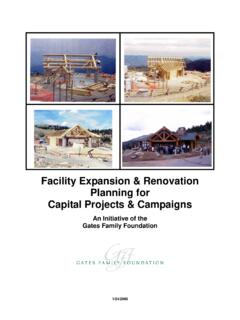Transcription of Coronavirus Capital Projects Fund FAQs
1 AS OF APRIL 28, 2022 1 Coronavirus Capital Projects Fund Frequently Asked Questions AS OF APRIL 28, 2022 This document contains answers to frequently asked questions (FAQ) regarding the Coronavirus Capital Projects Fund (CPF), established by Section 604 of the Social Security Act, as added by Section 9901 of the American Rescue Plan Act of 2021. This FAQ document clarifies CPF Guidance for States (defined to include the District of Columbia and Puerto Rico), Territories, Freely Associated States, and Tribal Governments (the Guidance), and does not supersede the Guidance except as noted. Terms used in the FAQ but not defined herein have the meaning specified in the Guidance. Treasury will be updating this document periodically in response to questions received from stakeholders; changes will be clearly marked. Recipients and stakeholders should consult Treasury s CPF Guidance for States, Territories, and Freely Associated States and CPF Guidance for Tribal Governments for additional information.
2 For overall information about the program, including information on requesting funding, please see For general questions about CPF, please email Questions added 1/4/22: , , , , , , , , , , , (noted with [1/4] ) Questions added 4/28/22: , , , , , , , , (noted with [4/28] ) 1. Eligibility and Allocations Which governments are directly eligible for funds? The following governments are eligible to apply for CPF grants: The 50 states, the District of Columbia, and Puerto Rico (the States) Tribal governments and the State of Hawaii (for Native Hawaiian Programs) The United States Virgin Islands, Guam, American Samoa, the Commonwealth of the Northern Mariana Islands, the Republic of the Marshall Islands, the Federated States of Micronesia, and the Republic of Palau AS OF APRIL 28, 2022 2 Are cities and counties eligible to apply for CPF grant funds? No. The Capital Projects Fund makes grant funds available to States (defined to include the District of Columbia and Puerto Rico), territories, freely associated states, and Tribal governments.
3 While cities and counties are not directly eligible recipients, Treasury encourages direct recipients of CPF grants to engage with communities when planning for the use of grant funds. Are libraries and other community centers eligible to apply for CPF grant funds? No. The Capital Projects Fund makes funds available to States, territories, freely associated states, and Tribal governments. While libraries and other community centers are not eligible to apply, Treasury encourages direct recipients of CPF grants to engage with communities when planning for the use of grant funds. What is the grant period of performance? A recipient may use CPF grant funds to cover costs incurred beginning March 15, 2021 and ending December 31, 2026. For pre-award costs incurred after March 15, 2021, but prior to execution of the Grant Agreement, CPF recipients are required to provide reasonable assurance that the costs were incurred pursuant to the negotiation of and in anticipation of the CPF grant award and are necessary for the efficient and timely performance of the program.
4 When will CPF recipients receive grant awards? Treasury will make CPF grant funds available to States, territories, and freely associated states once the Grant Agreement is provided and a Grant Plan (containing at least one Program Plan) is reviewed and approved by Treasury. Only one Grant Agreement must be executed per State, territory, and freely associated state. For States, territories, and freely associated states, funds will be released to the recipient on an advance basis as requested by CPF recipients, rather than as a single lump sum for the total amount allocated to the State, territory, or freely associated state at the time of approval. Treasury will make requested Capital Projects Fund administrative funds (up to 5% of total allocated funds, as indicated by the recipient in the application) available to States, territories, and freely associated states once the Grant Agreement is executed. Additional funds will be made available for project costs as related Program Plans are approved.
5 Tribal governments will receive CPF funds once an application is reviewed and Grant Agreement is executed. AS OF APRIL 28, 2022 3 2. Applications, Grant Plans, and project Plans What is the deadline to apply for CPF grants? States, territories, and freely associated states must submit applications by December 27, 2021 to receive funding under the Capital Projects Fund. These entities must also submit Grant Plans and Program Plans by September 24, 2022. Tribal governments must submit applications by June 1, 2022 to receive funding. Tribal governments do not need to submit a separate Grant Plan. Will Treasury review CPF applications on a rolling basis? Yes. Treasury will review applications upon submission and make CPF grant funds available upon approval. What is the deadline for CPF recipients to submit a Grant Plan? States, territories, and freely associated states must submit Grant Plans, including one or more Program Plans, by September 24, 2022.
6 Tribal applicants do not need to submit a separate Grant Plan. When must CPF grant funds be expended? All funds must be expended by December 31, 2026, which is the end of the period of performance. Recipients must return to Treasury any grant funds that are not used by the end of the period of performance on December 31, 2026. Treasury may, in its sole discretion, grant extensions to the period of performance upon request from CPF recipients. For State, territory, and freely associated state applicants, what is an Authorized Representative ? An Authorized Representative is an individual who will sign the CPF application, necessary certifications, and the Grant Agreement on behalf of the eligible applicant. For States, territories, and freely associated states, the Authorized Representative will be one of the following: An individual who is duly authorized by law (such as the Governor). In some cases, Treasury may request documentation confirming the status of the duly authorized individual.
7 An individual who has been granted authority to act on behalf of the eligible applicant by someone who is duly authorized to delegate such authority. A designation letter showing the delegation of authority must be provided to AS OF APRIL 28, 2022 4 Treasury. The letter must provide the Authorized Representative authority to act on behalf of the eligible applicant to apply for and execute a CPF grant, and to enter into agreements on behalf of the eligible applicant. The designation letter must be signed by a person who is duly authorized by virtue of their position (such as the Governor) to delegate such authority. Can eligible CPF recipients modify a submitted Grant Plan? Recipients may submit or modify Grant Plans prior to the deadline. Updates to Grant Plans will be subject to review and approval by Treasury. Can the Grant Plan be submitted at the same time as the application ( , before the Grant Agreement is executed)? Treasury will not review a Grant Plan until an eligible State, territory, or freely associated state application has been approved.
8 An eligible State, territory, or freely associated state may submit a Grant Plan prior to executing the Grant Agreement, but no funds other than the administrative funds will be available to the recipient until the Grant Agreement has been executed and the Grant Plan approved. Funds for project costs will be made available as related project plans are approved. For Tribal governments, the initial application for the CPF grant will also serve as the Grant Plan. After approval of the Tribal application, funds will be made to the Tribal government. What should State, territory, and freely associated state recipients include in a Program Plan? Program Plans can be a framework for how the State, territory, or freely associated state will utilize CPF funds. A Program Plan may propose funding for multiple, individually related Projects or subgrants that all serve a common objective ( , Broadband Infrastructure). In the Program Plan, recipients are not expected to submit information about each individual project or subgrant, however project level data will be gathered during the reporting phase.
9 Additional information regarding CPF grant and Program Plans will be made available in the coming weeks. Future updates will be posted on the CPF landing page: How does Treasury categorize costs associated with completing the CPF application and Grant Plan? [1/4] Treasury categorizes costs associated with completing the CPF application as program administrative costs. In addition, for States, territories, and freely associated states, Treasury categorizes costs associated with the development of the Grant Plan (including Program Plans) as program administrative costs. This classification marks a change from AS OF APRIL 28, 2022 5 the CPF Guidance for States, Territories, and Freely Associated States and CPF Guidance for Tribal Governments posted in September 2021. By making this change, Treasury aims to ease the burden on CPF recipients by making funds available for these costs sooner. Non-Tribal government recipients may now access program administrative funds to pay for these costs upon execution of the Grant Agreement.
10 As a reminder, CPF recipients may use up to five percent of the total grant award amount or $25,000 (whichever is greater) for program administrative costs unless a CPF recipient receives written approval from Treasury. This change is effective immediately; Treasury will update the Guidance to reflect this modification. How does Treasury categorize costs for community engagement activities? [4/28] Treasury categorizes costs associated with community engagement activities in connection with the development of the Grant Plan (including Program Plans) as program administrative costs. All other costs associated with community engagement activities ( , seeking public comment related to a project s location, design, or environmental impacts) should be categorized as project costs. This classification broadens how costs for community engagement activities may be treated and is consistent with the Program Plan Use Code templates available in the Treasury Submission Portal.
